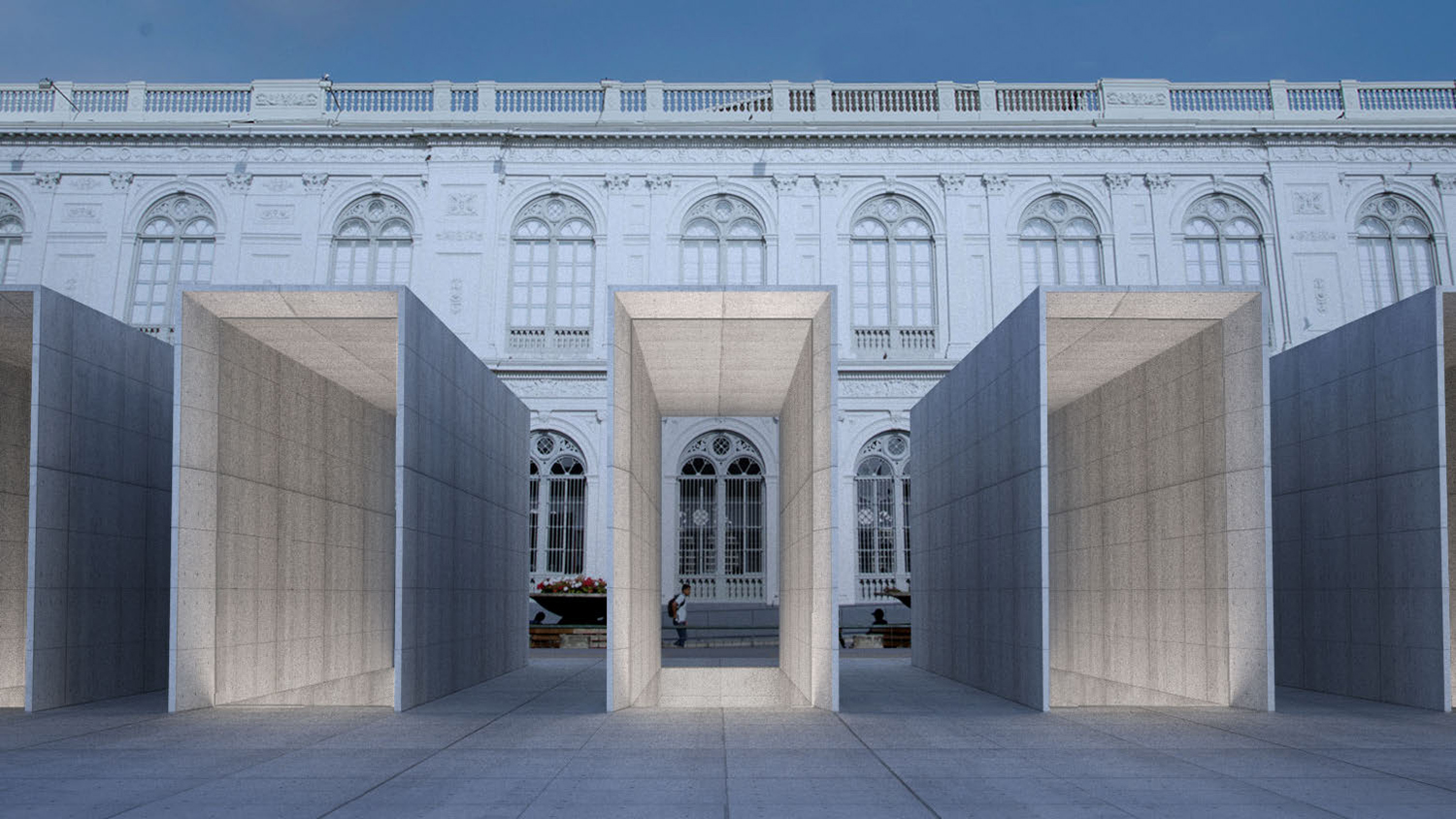
Winner of AIANY Design Award, the Lima Art Museum is an expansion on the existing Museo de Arte de Lima that creates a new contemporary art wing.

Winner of AIANY Design Award, the Lima Art Museum is an expansion on the existing Museo de Arte de Lima that creates a new contemporary art wing.
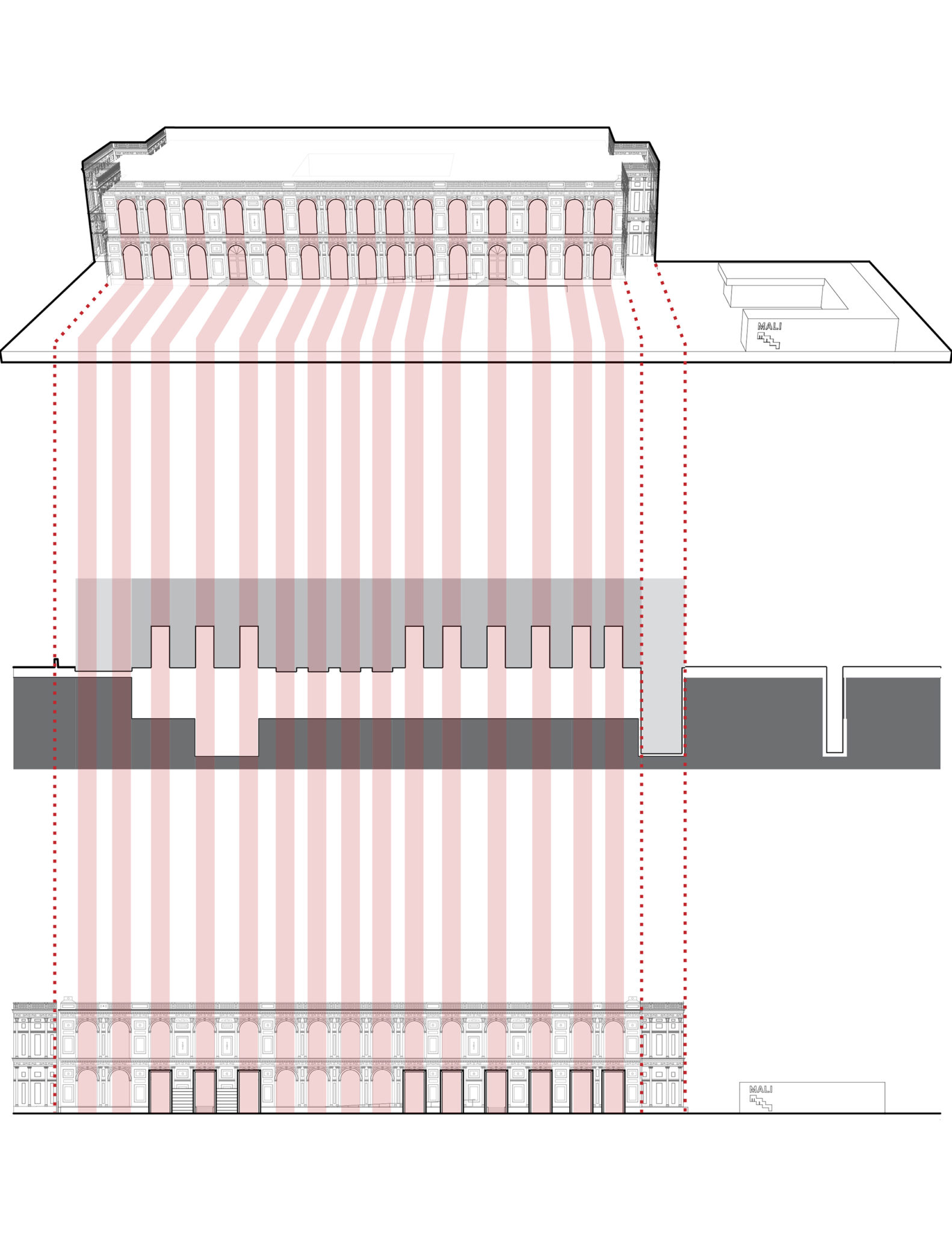
The solid & void rhythm of the Exposition Palace’s west façade is projected onto the site, thereof which the cadence of the corresponding light-wells and sunken gardens running on the East-West axis are generated. The translation of the Exposition Palace’s architectural language into rhythmic meandering forms create a strong dialogue between the two structures; they connect without touching.
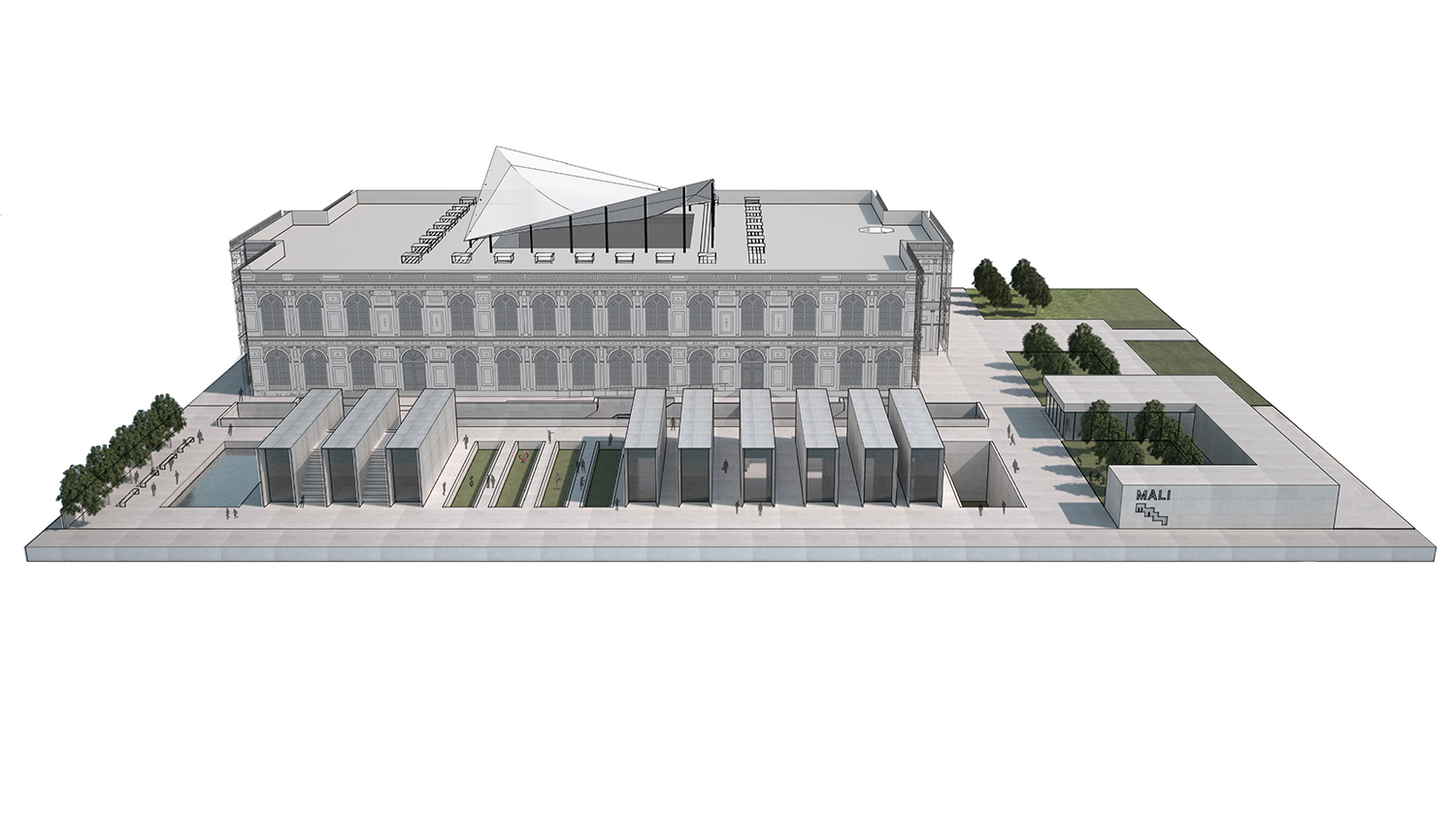
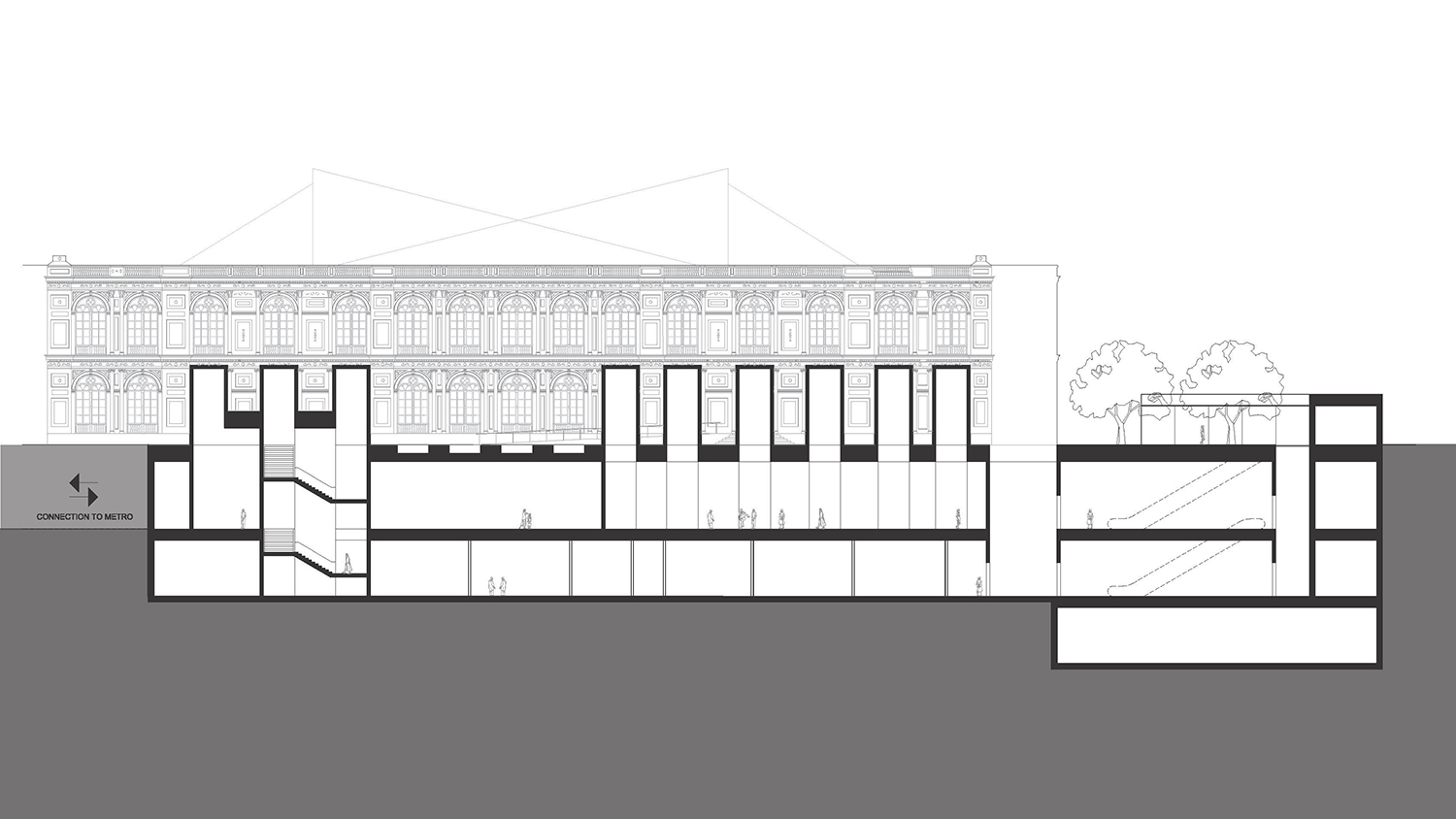
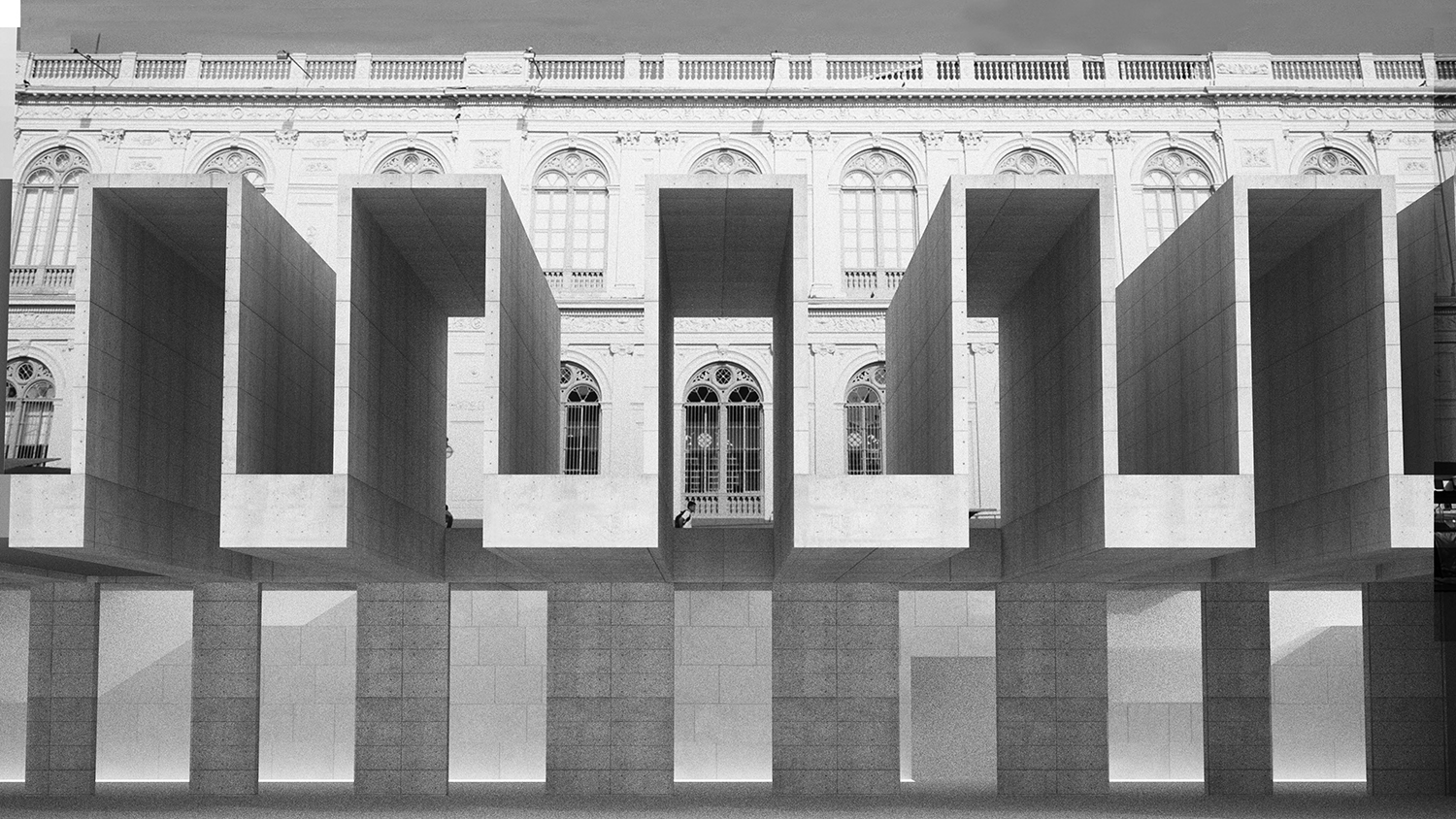
The echoes of the Exposition Palace resonates throughout the new extension at varying scales and levels. Looking up from the new galleries, the visitors will see the framed views of each corresponding bay of the historical façade. Coming from the metro station, into the lower plaza, visitors will see the grandeur of the Palace stretching the entire length of the crevasse.
A crevasse is created on the plaza stretching along the North-South Axis that frames the views of the Exposition Palace and brings light into a cascading lower plaza.
The ethos of the new wing design is to create a cultural catalyst by blurring the boundaries of interior and exterior, park and museum, public and private, and infrastructural and institutional spaces.
Lower plaza (sculpture garden) is the main promenade connecting, Juana Alarco de Dammert Park and the metro station from the North, to the new contemporary art wing and the Exposition Park to the South.
Upper plaza (sculpture garden) is a labyrinthine space formed by meandering light-wells and sunken gardens, wherein, inside and outside are visually and functionally interwoven. The framed views of the Exposition building becomes a constant backdrop to the sculpture garden.
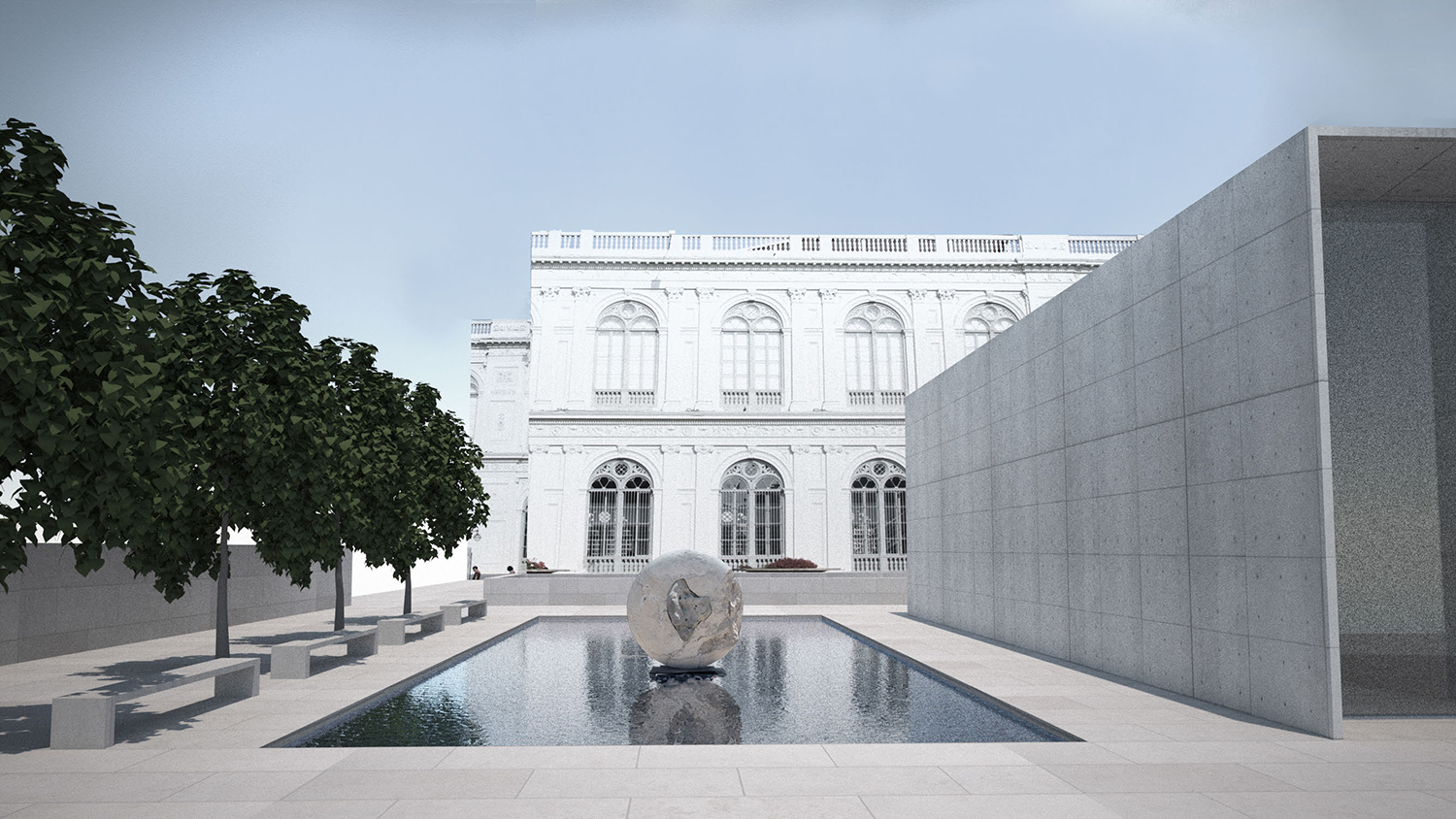
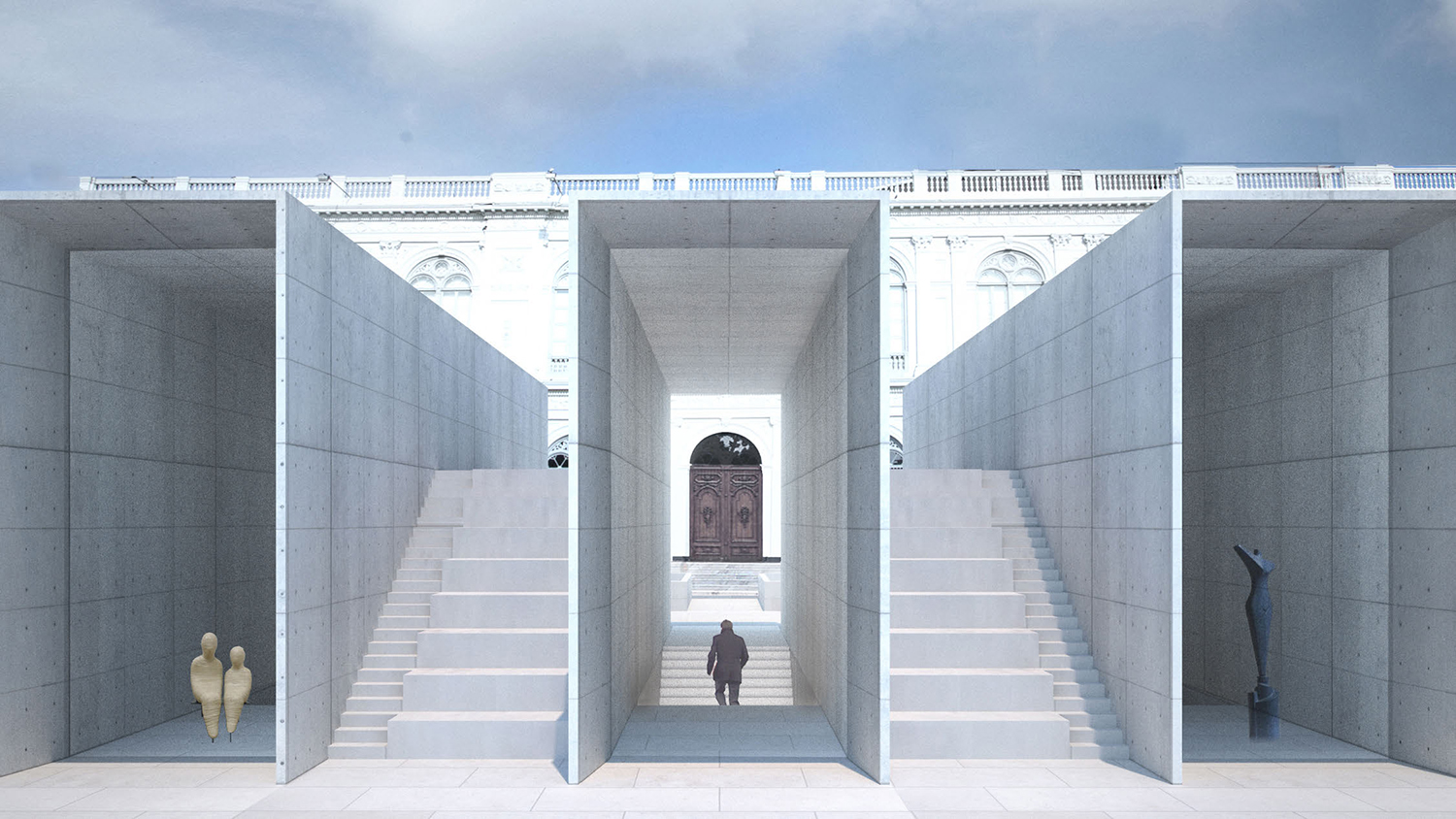
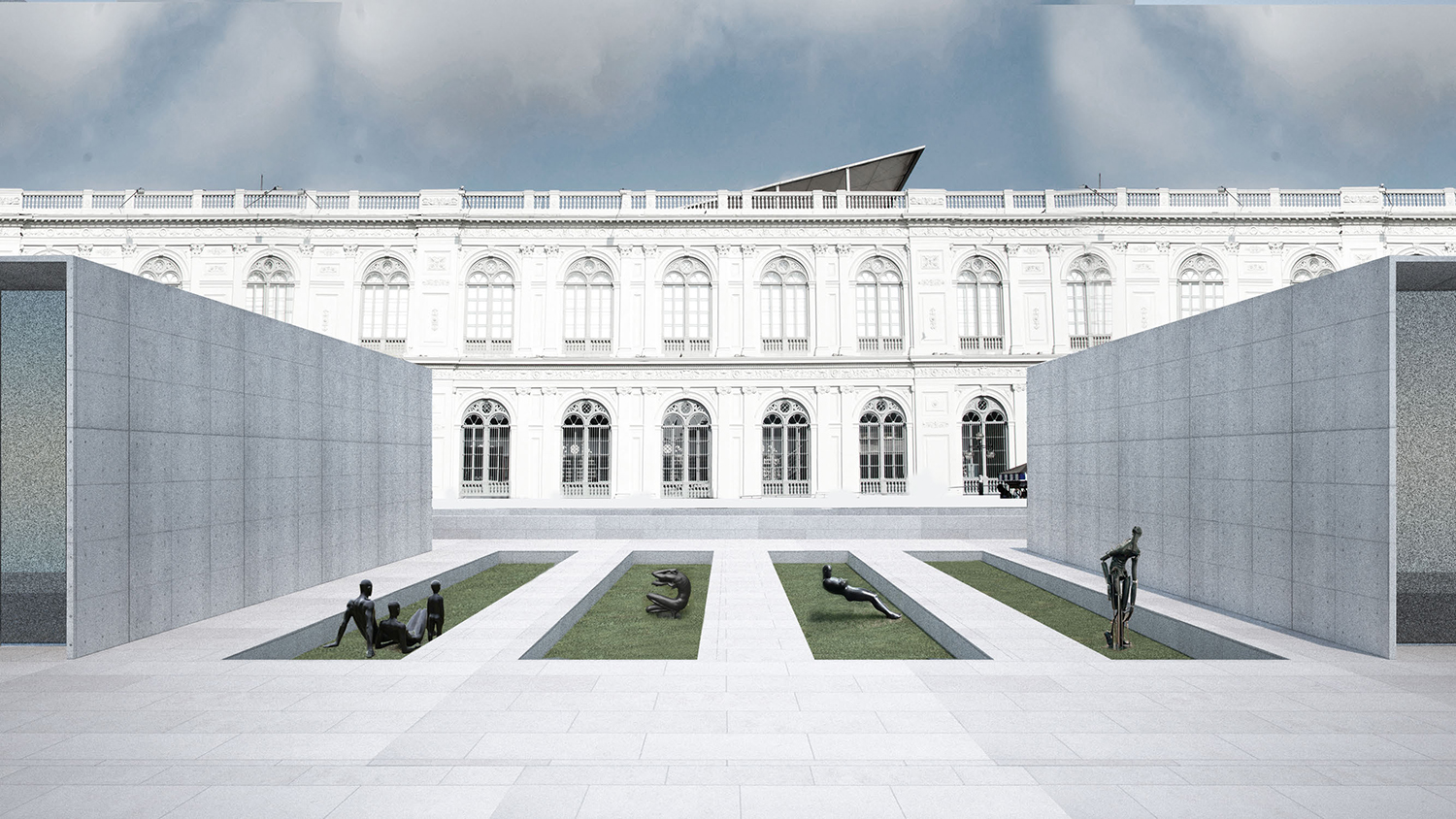
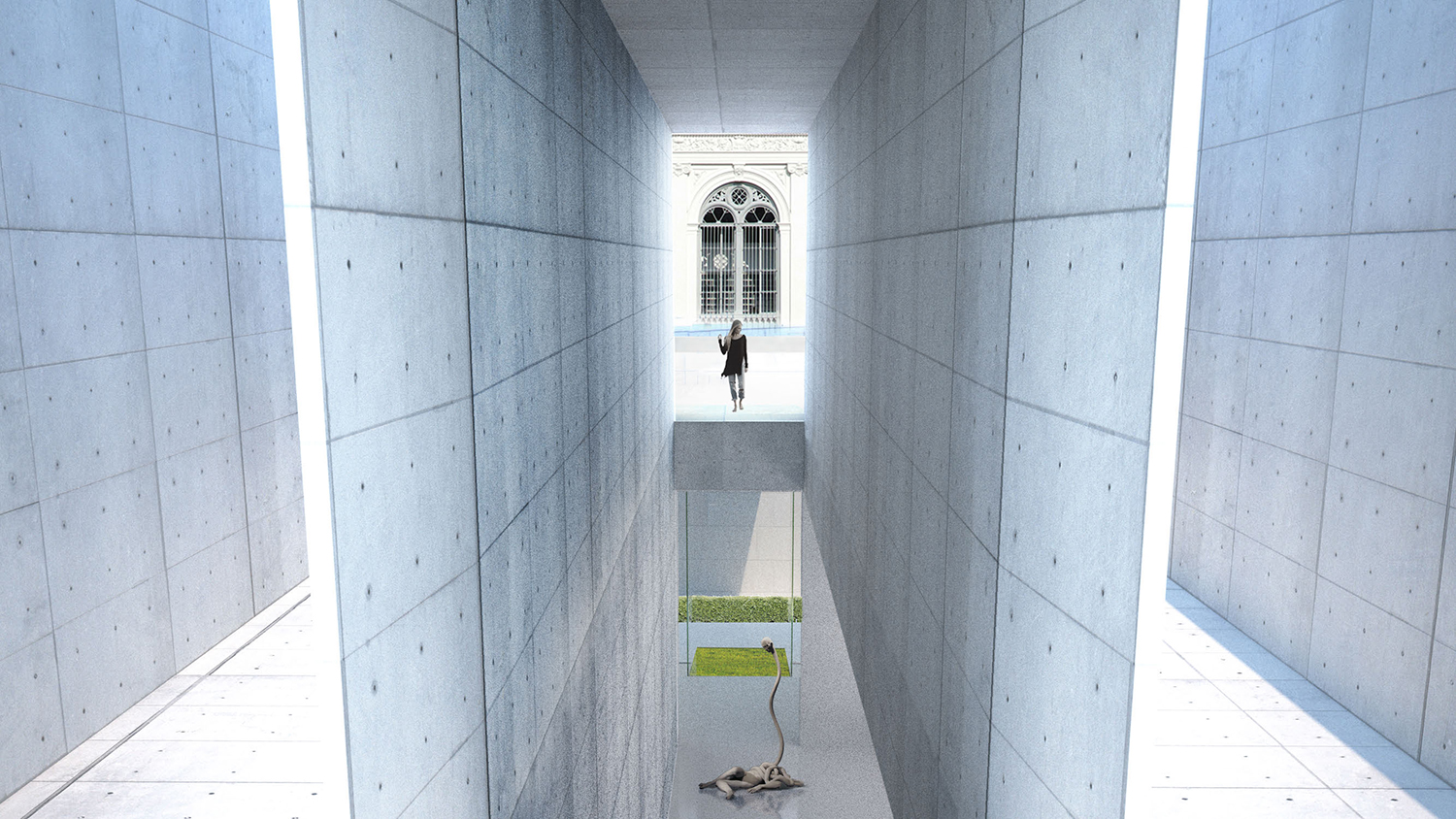
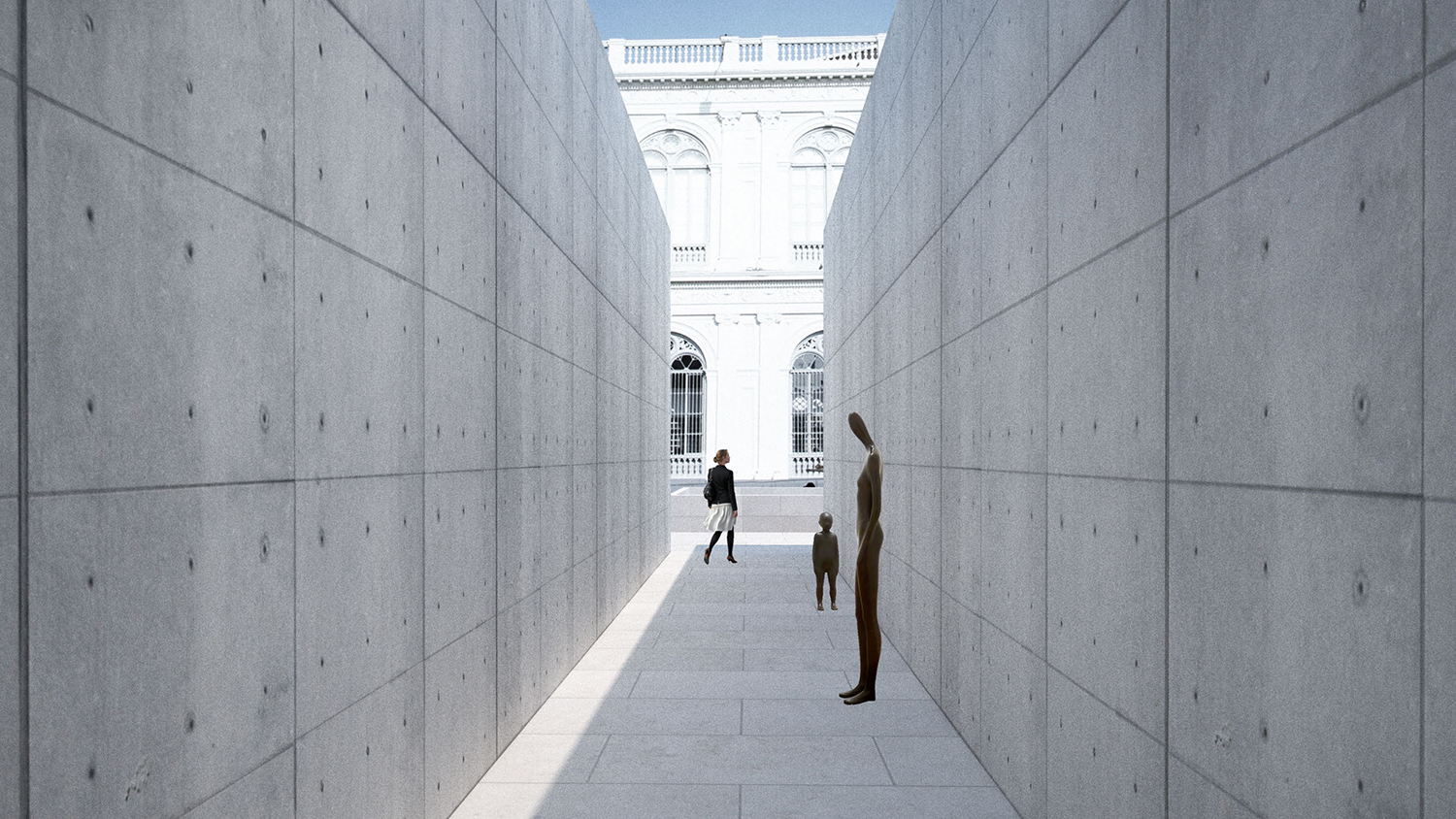
The galleries are located at the lower plaza level. The concrete meandering forms that span in the East-West direction create column free spaces that can be divided into smaller galleries to accommodate different exhibition designs. The light wells created by the meandering forms bring in natural light into the galleries. A sliding black-out panel is provided at the bottom of each light-well to control the light levels of the exhibitions.
A dedicated Education Wing Entry is provided that is facing directly across from the classroom entry (door 3) of the Exposition Palace. There is also an entry provided from the lower level plaza. The classrooms are located at the level below the galleries that have natural light coming from sunken gardens.
Their layouts allow flexibility for combining and subdividing classrooms. Library is located at this level adjacent to the classrooms. Both the classrooms and the library can be accessed without interfering with the gallery circulation.
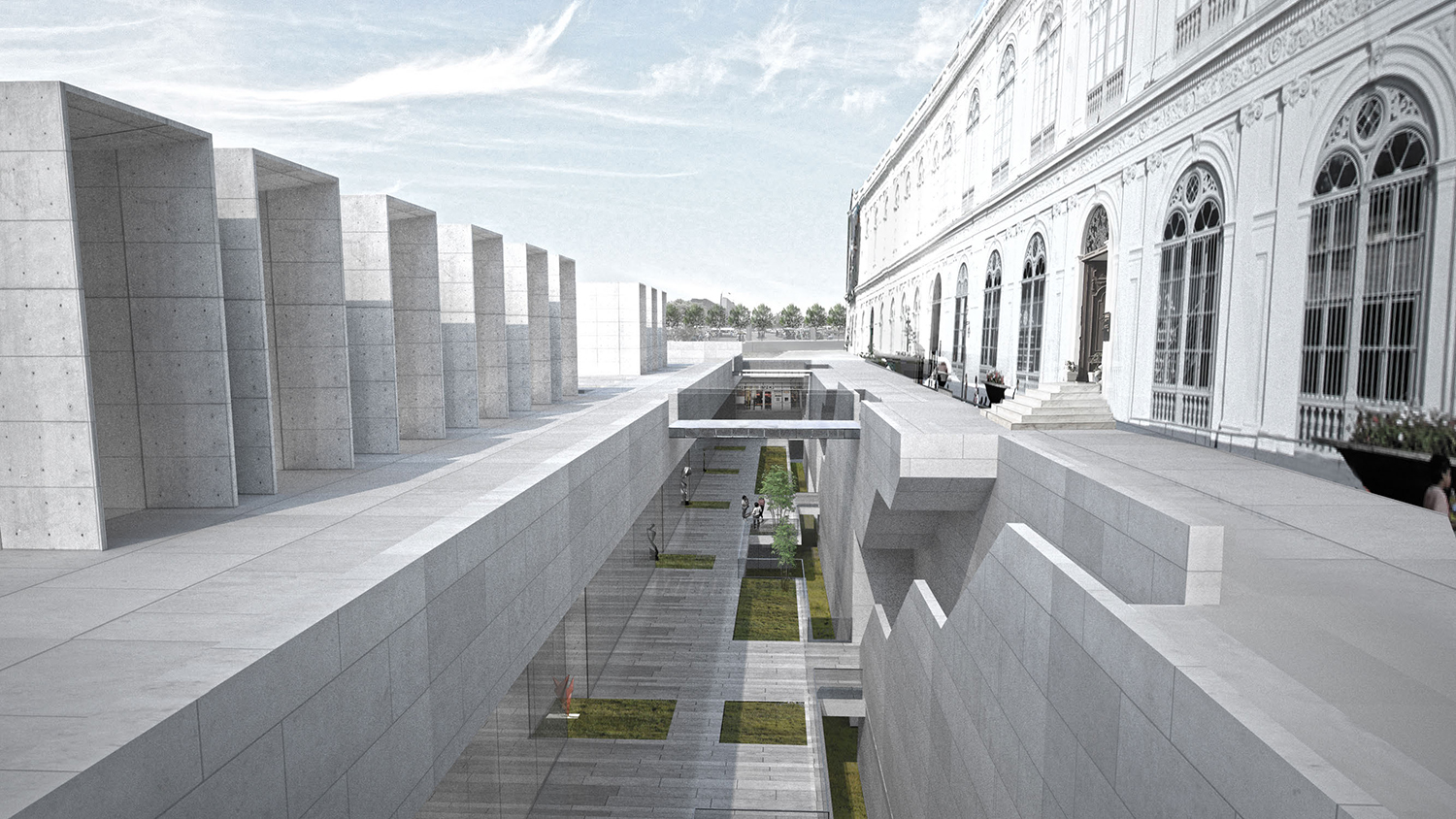
The main circulation spine runs along the lower plaza at the Eastern edge of the galleries facing the Exposition Palace above. The galleries can be accessed from both the upper plaza, adjacent to the museum’s main entry, and from the lower plaza, close to the metro station exit.
A separate service entry and drop-off area is provided on the South West corner of the site. An over-sized freight elevator with an adjacent staging area is provided to service all the three levels of the museum without interfering with the visitor experience.
AWARDS: Winner of 2017 AIANY Design Award